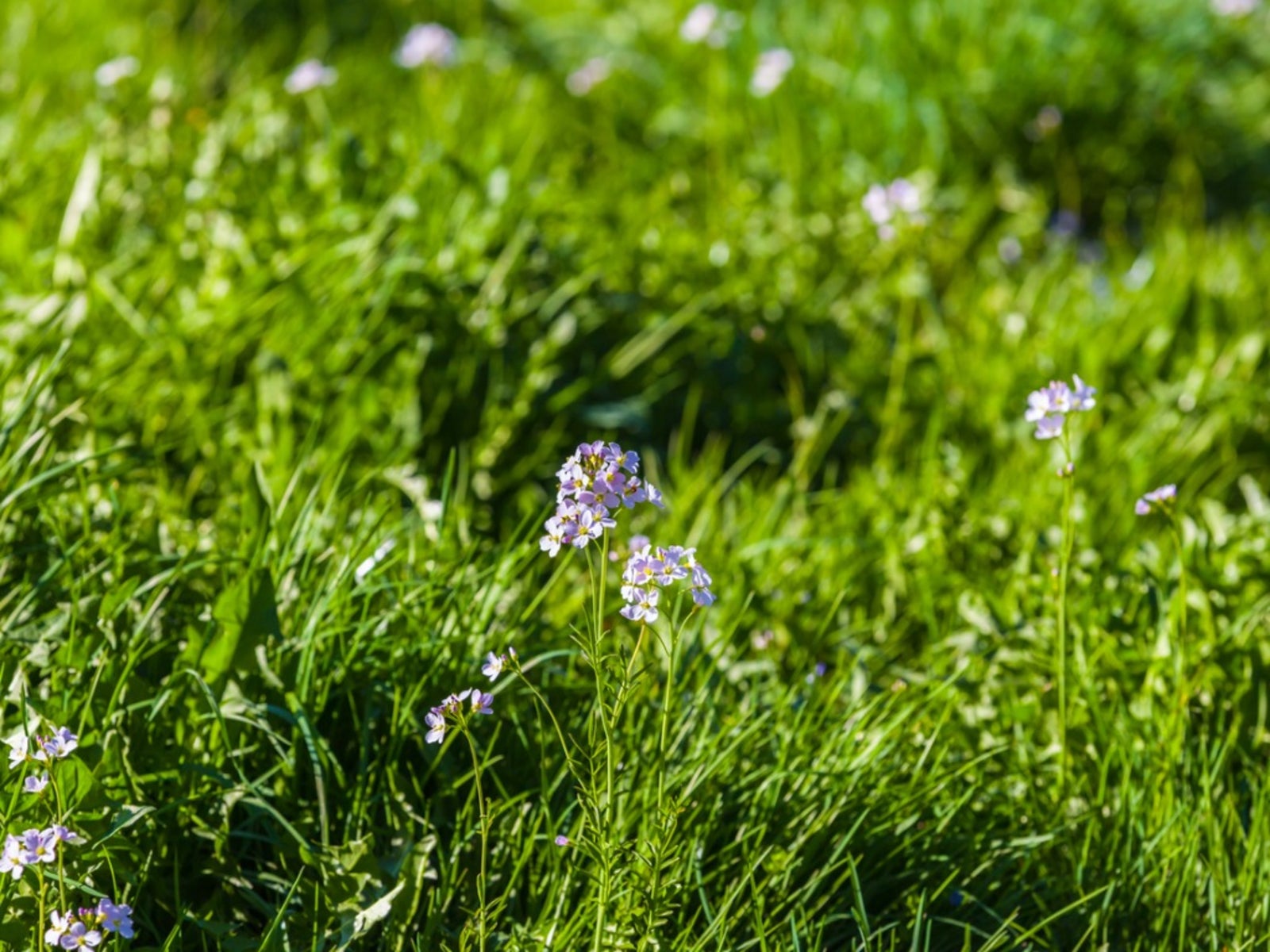Blue Eyed Grass Care: Growing Blue Eyed Grass Wildflower In The Garden


Perennial blue eyed grass wildflower is a member of the Iris family, but it is not a grass at all. It is native to North America and forms clumps of slender, long foliage, topped in spring with small periwinkle flowers. The plant is a bright addition to any location in the garden. Almost any garden soil is where to plant blue eyed grass and it will attract bees and feed wild birds throughout the years.
What is Blue Eyed Grass?
The gardener looking for a substitute for iris or other bulb flowers should explore the blue eyed grass plant (Sisyrinchium spp.). So what is blue eyed grass and is it a suitable plant for the garden? This plant is clumping and can get 4 to 16 inches (10-40 cm.) tall and equally wide. Blue eyed grass wildflower grows from hardy rhizomes that send out tall, blade-like foliage, much like grass blades and this is where the “grass” in its name derives. The nearly foot (31 cm.) tall foliage bears wiry stems topped with the brilliant blue flowers but may also be white or violet and have a yellow “eye” in the center. This yellow corolla earns the plant its colorful name. USDA zones 4 to 9 are suitable locations for growing blue eyed grass. Blue eyed grass wildflower is useful in rock gardens, borders, containers, and as part of a wildflower meadow. Growing blue eyed grass is an excellent way to introduce native plant life to your garden. This promotes natural landscaping and helps wild animals with food and nesting materials.
Where to Plant Blue Eyed Grass
Knowing where to plant blue eyed grass is important for its overall health. So when growing blue eyed grass, choose a partially sunny location. While the plant can grow in full sun, it performs best in low light situations. It is tolerant of any soil pH as long as it drains well. Blue eyed grass will thrive in moist to average garden soil. The plant is easy to propagate by dividing plantlets away from the parent plant. Break off or cut the rhizomes away from the main plant, including the slender foliage of the young plants that form at the base. Plant them as individual specimens for increased spring beauty. The clump will get large year by year but you can dig it up and cut it into sections for new plants. Divide the plant in late winter every two to three years and you will have a scattering of the pretty flowers across the landscape. In addition to propagation by division, the flowers will produce seed in spring. Seeds spread easily in gardens with adequate moisture.
Blue Eyed Grass Care
Growing blue eyed grass care isn't difficult. Allow the leaves to remain on the plant after the blooms fade in summer. This gives the foliage time to gather energy to store in the rhizomes for the following season's bloom. After they turn brown, cut them back to just above the crown. Mulch around the plants with organic material to provide nutrients and help protect the plants during freezing temperatures. In zones below 4 or where hard freezes last all winter, dig up the plant in fall and pot up in garden soil. Move the plant to a low light location where temperatures are above freezing. When soils are workable, replant in spring and enjoy blue eyed grass wildflowers until summer.
Gardening tips, videos, info and more delivered right to your inbox!
Sign up for the Gardening Know How newsletter today and receive a free copy of our e-book "How to Grow Delicious Tomatoes".

Bonnie Grant is a professional landscaper with a Certification in Urban Gardening. She has been gardening and writing for 15 years. A former professional chef, she has a passion for edible landscaping.
-
 Types Of Tomatoes Explained: Explore The Many Wonderful Shapes, Colors, Flavors, & Best Uses
Types Of Tomatoes Explained: Explore The Many Wonderful Shapes, Colors, Flavors, & Best UsesThe world of tomato varieties is vast and fascinating. Learn about the key types to grow in your garden, tailored to your preferences and space.
By Amy Grant
-
 Try The Trend – Turn Any Bed Into A Keyhole Garden With This Clever In-Ground Composter
Try The Trend – Turn Any Bed Into A Keyhole Garden With This Clever In-Ground ComposterKeyhole gardening is an efficient and sustainable practice that saves space. Get started on this DIY project quickly and easily with an in-ground composter.
By Bonnie L. Grant